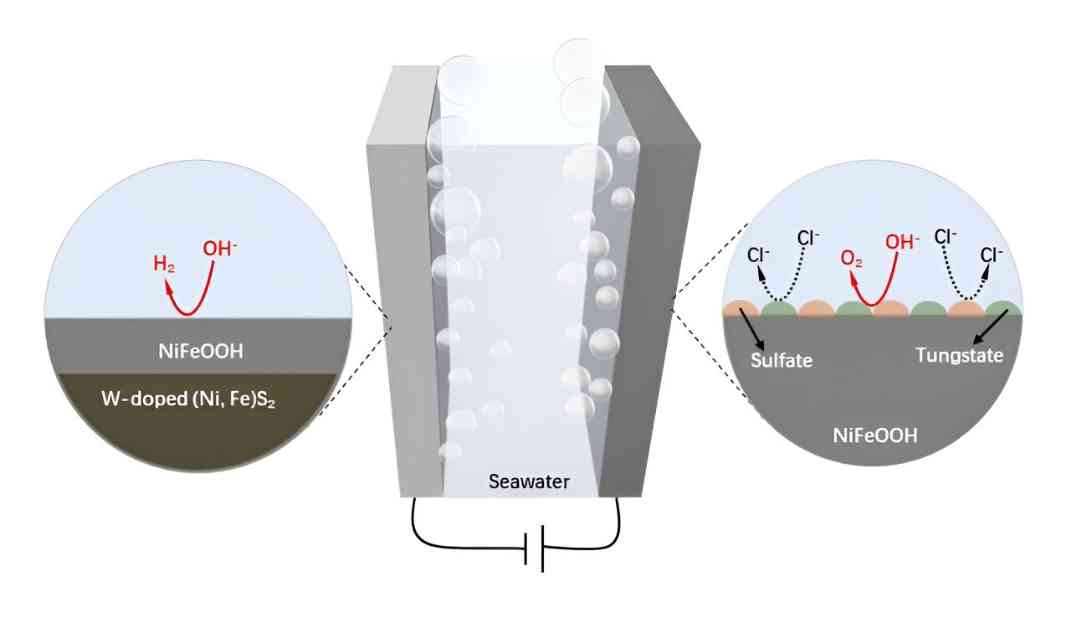Sustainable Hydrogen Production: Seawater Electrolysis Revolutionizing the Energy Sector
Seawater electrolysis stands out as a promising solution in the quest to decarbonize the global energy sector. Despite its potential, challenges such as anode corrosion, unwanted reactions, and expensive catalysts have impeded the progress of direct seawater electrolysis. However, recent advancements in the field have paved the way for sustainable hydrogen production through innovative approaches and materials.
The Role of Self-Supported Nickel-Iron (NiFe) Materials
Self-supported nickel-iron (NiFe) materials have emerged as key players in the realm of seawater electrolysis. These materials serve as bifunctional catalysts for both hydrogen evolution and oxygen evolution, boasting high intrinsic activity and affordability. Their versatility and efficiency make them ideal for addressing the challenges associated with seawater electrolysis.
Wood-based carbon (WC) structures have also garnered attention as an excellent substrate for active materials like NiFe due to their hierarchical porous nature and exceptional conductivity. This combination of materials has opened up new avenues for enhancing the stability and performance of electrodes in seawater electrolysis.
The Breakthrough Innovation: WC-Supported W-Doped NiFe Sulfide Electrode
In a groundbreaking collaboration, Prof. Hong Chen, Prof. Bing-Jie Ni, and Prof. Zongping Shao have introduced a novel approach to enhance the stability of NiFe-based electrodes in seawater electrolysis. Their research, published in the journal Science Bulletin, highlights the development of a WC-supported W-doped NiFe sulfide (W-NiFeS/WC) electrode for efficient overall seawater electrolysis.
By incorporating tungsten into the active NiFe-based catalysts, the researchers were able to significantly improve the anti-corrosion properties and stability of the anodes. The specialized preparation method involving impregnation and sulfidation led to the creation of a three-dimensional hierarchical porous structure with oriented microchannels, densely anchored W-NiFeS nanoparticles, and high porosity.
The innovative electrode’s rich redox-active centers, excellent electrocatalytic properties, and stability in alkaline seawater conditions set it apart from traditional catalysts. It demonstrated superior activity and stability in both the oxygen evolution reaction (OER) and hydrogen evolution reaction (HER) in alkaline seawater, showcasing its potential for sustainable hydrogen fuel production.
The Impact of Structure Reconstruction and Wood Waste-Derived Carbon Structures
This research not only emphasizes the importance of structure reconstruction for energy conversion reactions but also highlights the potential of wood waste-derived carbon structures in advanced electrochemical device design. By repurposing abundant wood waste into efficient catalysts for seawater electrolysis, the researchers have embraced a circular economy approach that minimizes waste generation and promotes sustainable green hydrogen production from seawater.
Zhijie Chen, the first author of the study, notes, “The in situ structure evolution of W-NiFeS/WC in OER generates anti-corrosive tungstate and sulfate species on the surface of active Ni/Fe oxyhydroxides. Also, the self-evolved W-NiFeS decorated NiFeOOH can catalyze HER efficiently.” With its low fabrication cost and high effectiveness, the WC-supported W-doped NiFe sulfide electrode emerges as a compelling choice for seawater electrolysis, driving advancements in sustainable hydrogen production.
In conclusion, the innovative developments in seawater electrolysis, particularly the introduction of WC-supported W-doped NiFe sulfide electrodes, are revolutionizing the energy sector. By overcoming key challenges and leveraging sustainable materials, researchers are paving the way for a greener and more efficient future in hydrogen production.













